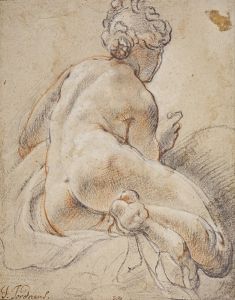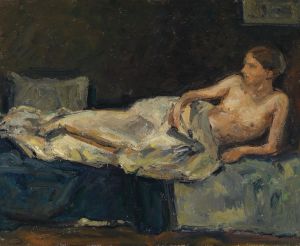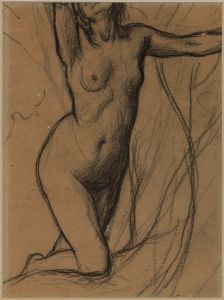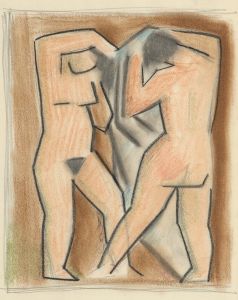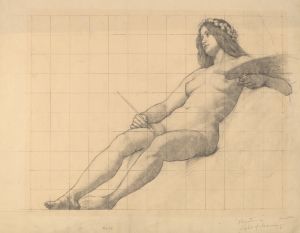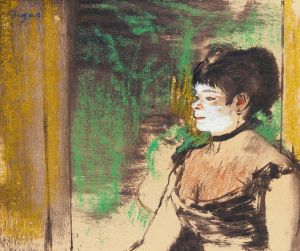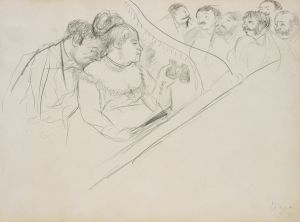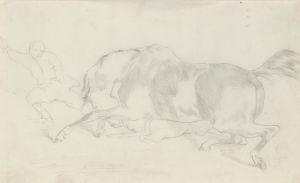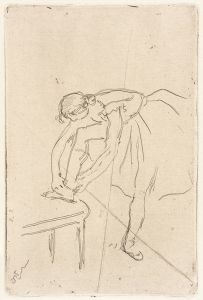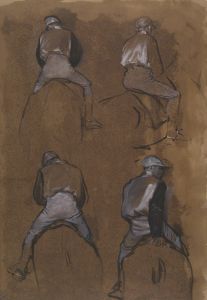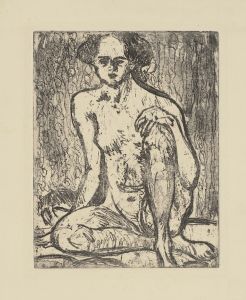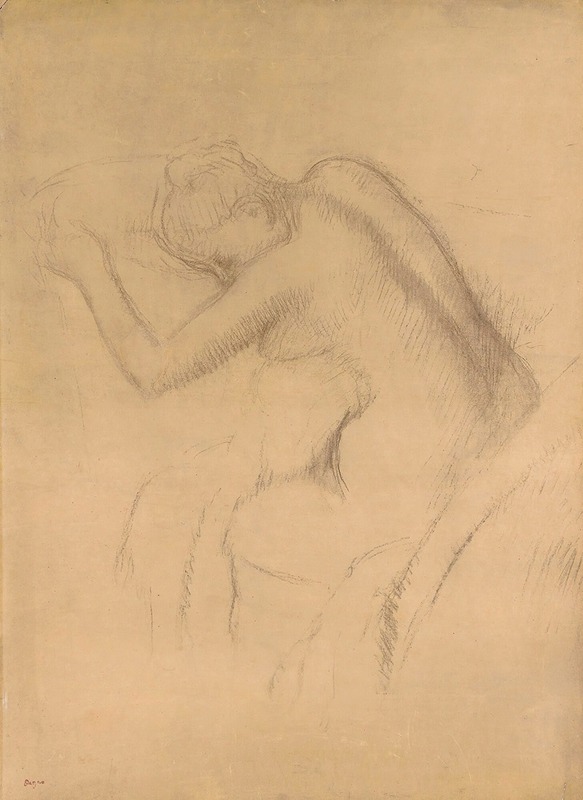
Femme Nue Assise
A hand-painted replica of Edgar Degas’s masterpiece Femme Nue Assise, meticulously crafted by professional artists to capture the true essence of the original. Each piece is created with museum-quality canvas and rare mineral pigments, carefully painted by experienced artists with delicate brushstrokes and rich, layered colors to perfectly recreate the texture of the original artwork. Unlike machine-printed reproductions, this hand-painted version brings the painting to life, infused with the artist’s emotions and skill in every stroke. Whether for personal collection or home decoration, it instantly elevates the artistic atmosphere of any space.
Edgar Degas, a prominent French artist associated with the Impressionist movement, is renowned for his mastery in capturing the human form, particularly through his depictions of dancers and nudes. One of his works, "Femme Nue Assise" (Seated Nude Woman), exemplifies his skill in portraying the human body with a sense of realism and intimacy.
"Femme Nue Assise" is a pastel drawing, a medium Degas frequently employed to achieve a rich texture and depth of color. Pastels allowed Degas to blend colors seamlessly and create soft transitions, which are evident in the delicate rendering of the subject's skin tones. This technique also enabled him to capture the subtleties of light and shadow, adding a three-dimensional quality to the figure.
The artwork features a woman seated in a relaxed pose, her body turned slightly away from the viewer. This positioning creates a sense of privacy and introspection, a common theme in Degas's nudes. The composition is intimate, focusing on the natural curves and contours of the woman's body. Degas's attention to anatomical accuracy is evident, yet he also imbues the figure with a sense of grace and fluidity.
Degas's approach to the nude was often more analytical than sensual, reflecting his interest in the human form as a subject of study. He was known for his meticulous observation and often worked from live models, making numerous sketches before completing a final piece. This dedication to understanding the nuances of the body is apparent in "Femme Nue Assise," where the interplay of light and shadow highlights the model's musculature and posture.
The setting of "Femme Nue Assise" is minimalistic, drawing attention to the figure itself. Degas often employed such simplicity in his compositions, allowing the viewer to focus on the subject without distraction. The background is typically rendered in soft, muted tones, providing a subtle contrast to the more vibrant depiction of the nude.
Degas's nudes, including "Femme Nue Assise," were sometimes met with controversy during his lifetime. The candid nature of his work challenged the traditional, idealized representations of the female form prevalent in academic art of the time. Instead, Degas presented his subjects in natural, unguarded moments, emphasizing their humanity and individuality.
"Femme Nue Assise" is a testament to Degas's innovative approach to art and his ability to capture the essence of his subjects with sensitivity and precision. Today, his works continue to be celebrated for their technical excellence and their contribution to the evolution of modern art. Degas's influence is evident in the way artists perceive and depict the human form, making "Femme Nue Assise" an important piece in the study of art history.
While specific details about the creation date or the current location of "Femme Nue Assise" may not be widely documented, the piece remains an integral part of Degas's oeuvre, reflecting his enduring legacy as a master of the human figure.





